- info@naturebylennart.com

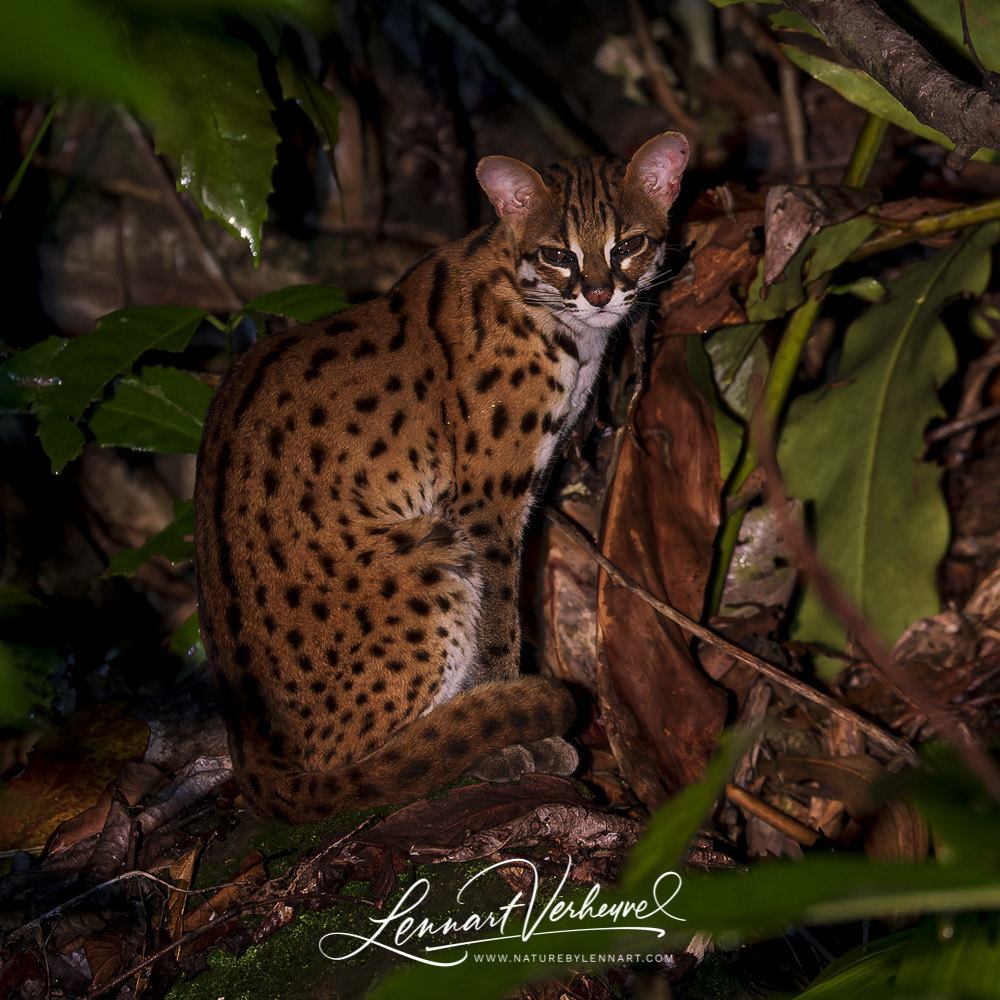
The Sunda Leopard Cat has recently been split by the IUCN Cat Specialist Group from Mainland Leopard Cat. This cat does not occur on mainland Asia and was a cat I expected to see in Borneo. As they were reported a lot in trip reports I expected to be successful for this cat and I was not disappointed. I saw my first in Danum Valley, but that went a bit fast. Luckily in Deramakot there were many good sightings.
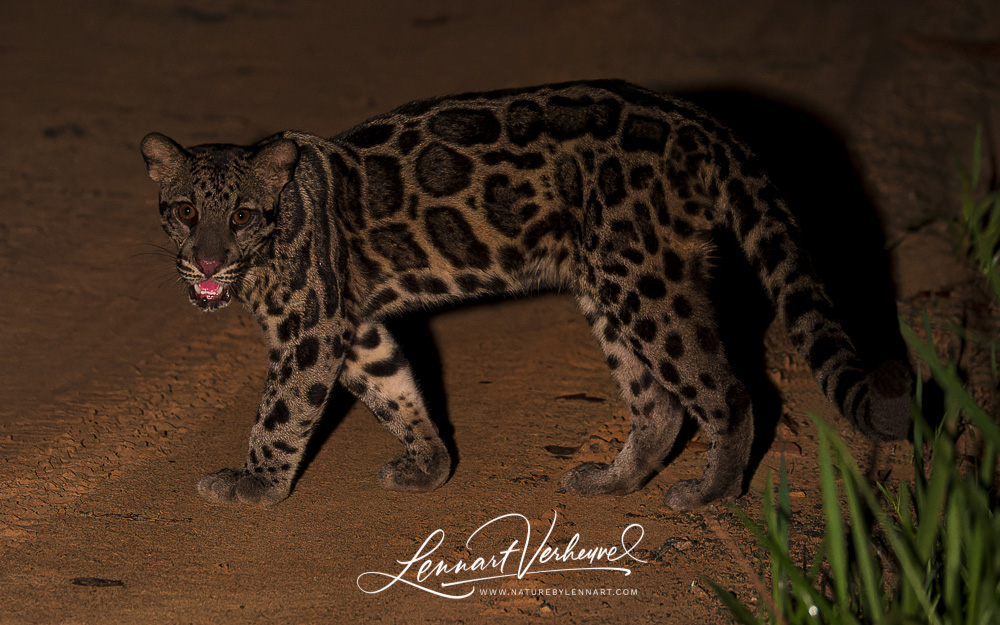
“Shall we drink some coffee?” “No, let’s wait a bit longer”. There are those little things that cause you to be in a certain place at a certain time. A short stop because it rains and you want to put on some raingear, waiting for a second to check out some eyeshine just in case it’s something more exciting than a flying squirrel and indeed waiting a bit longer to take some coffee. All those things can be the difference between only just missing out on a species and having a spectacular sighting.
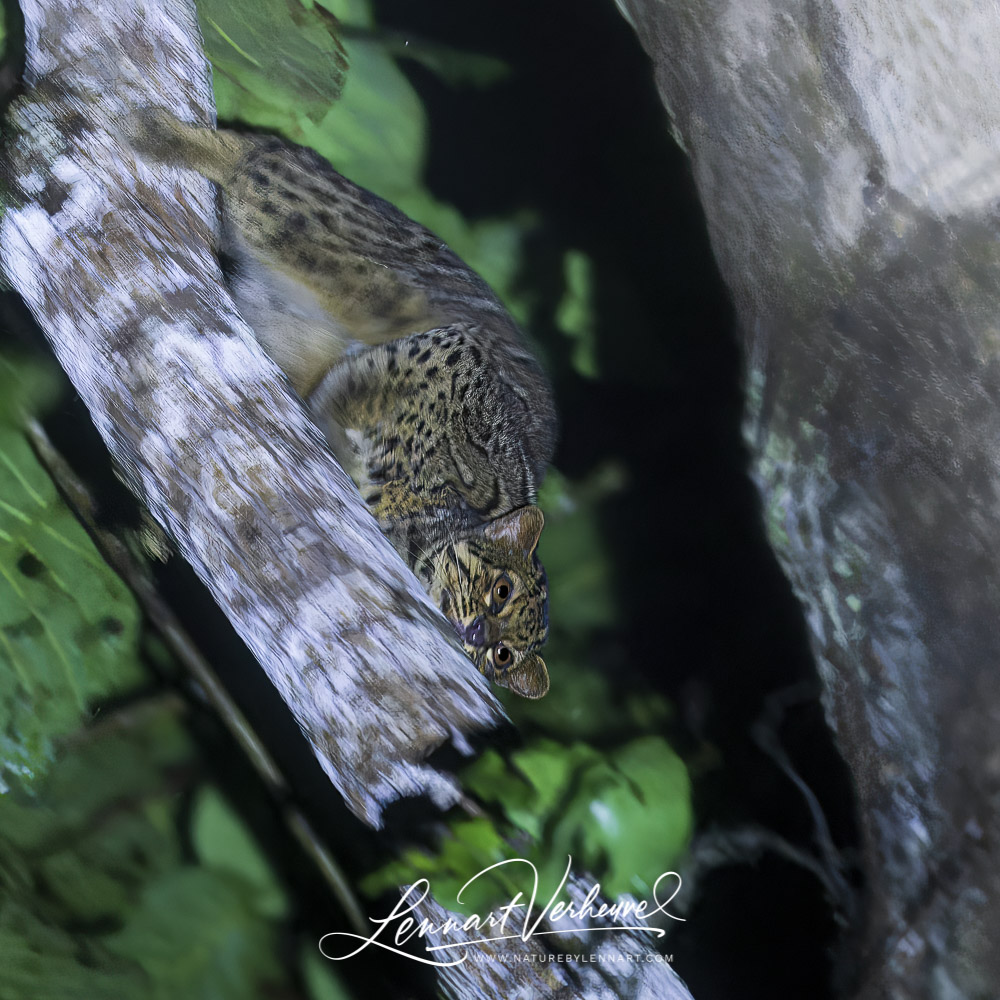
When I’m going on a trip I always try to make a somewhat realistic estimation of what is possible. My main goal in Borneo was to see as many cat species as I could find, but I knew it wouldn’t be easy to see more than one. There is only one cat easy on Borneo and that’s Sunda Leopard Cat. After that it gets tough! There are five species of cat that live on Borneo. The already mentioned Sunda Leopard Cat, Marbled Cat, Flat-headed Cat, the big one: Sunda Clouded Leopard and the most rare: Bay Cat. Bay Cat is in my opinion the most difficult cat to find on the planet so I knew I probably wouldn’t see that one. It would not be that much easier to see any of the others though. So I decided I would consider the trip a success if I saw even one other wild cat apart from the Sunda Leopard Cat.
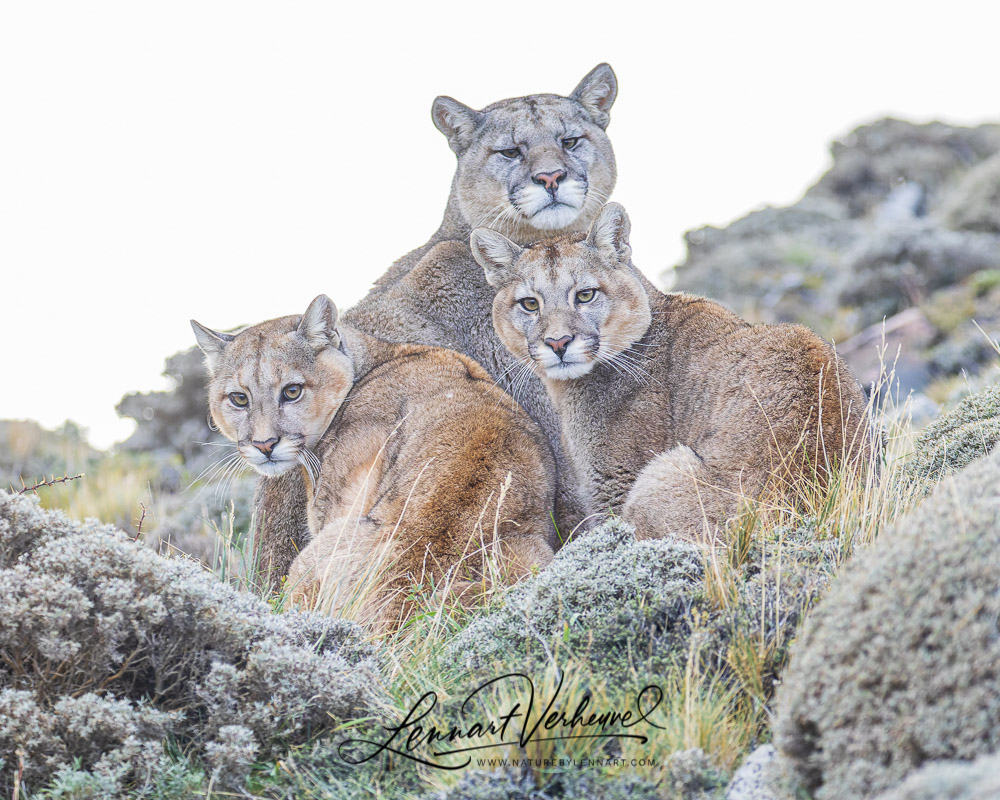
Two years ago I already started planning this trip, I always wanted to do a long trip after I had finished my studies at university. During that time my thoughts about what I was going to do changed many times, but eventually there was a plan! My plan is to visit three countries: Chile, Bolivia and Peru. Of course one goal is to work on my cat list, but I also want to improve my Spanish and of course I’ve got my eye on a few birds. The trip started at the most southern airfield of Chile: Punta Arenas. The goal of this part of the trip is Torres del Paine: a park that is supposed to be the best place in the world to see Puma’s.
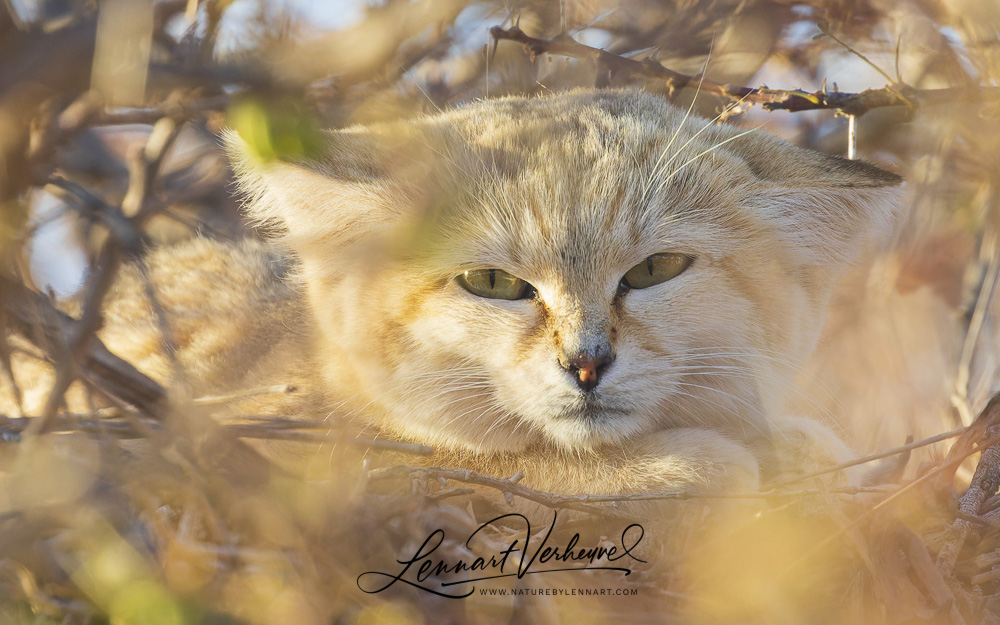
After my visit to Botswana, Namibia and South-Africa my worldcatlist had reached the impressive number of four! So there is still enough room for improvement! A cat on which I’ve had my eye on for quite some time is the Sand Cat. This animal is about the size of a house cat with a preference for desert like areas. For some years the most reliable place to see it is the Western Sahara near the town of Dakhla. We went there in January to try and see the cat.

In the Western Sahara we were searching for a Sand Cat. The way to see it is to drive the road between the places Dakhla and Aousserd up and down at night and then spotlight in the desert hoping to encounter a Sand Cat or another nocturnal animal.
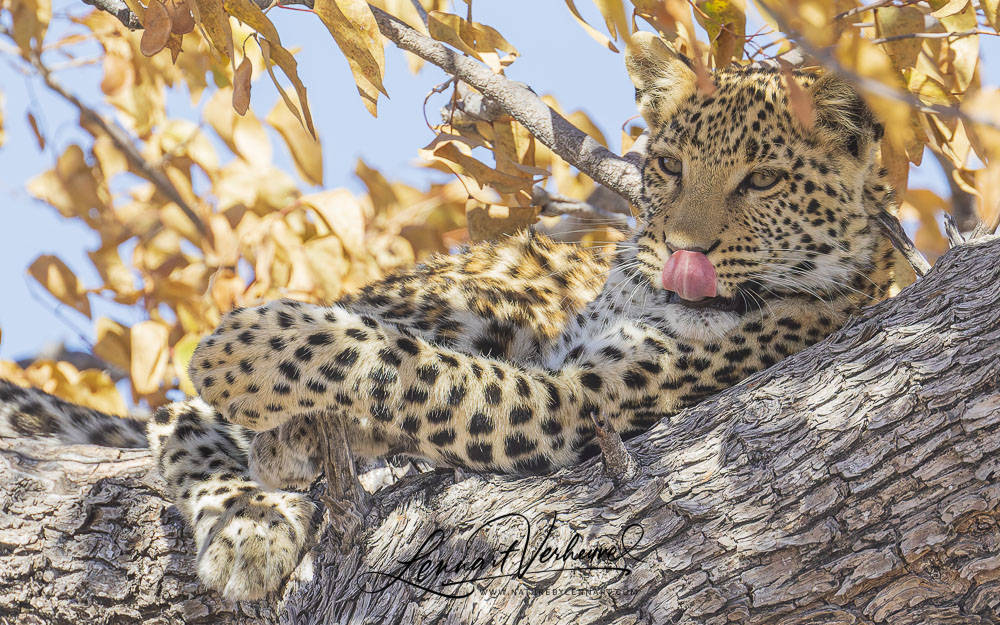
Today would be our second and final day in Etosha National Park. Alas, we must go on! Of course we hope to get the maximum out of the time we have left, so we’re waiting early at the gates again. We’re all still sleepy from yesterday. About one hundred meters after entering we’re wide awake: a lioness is stalking a prey!
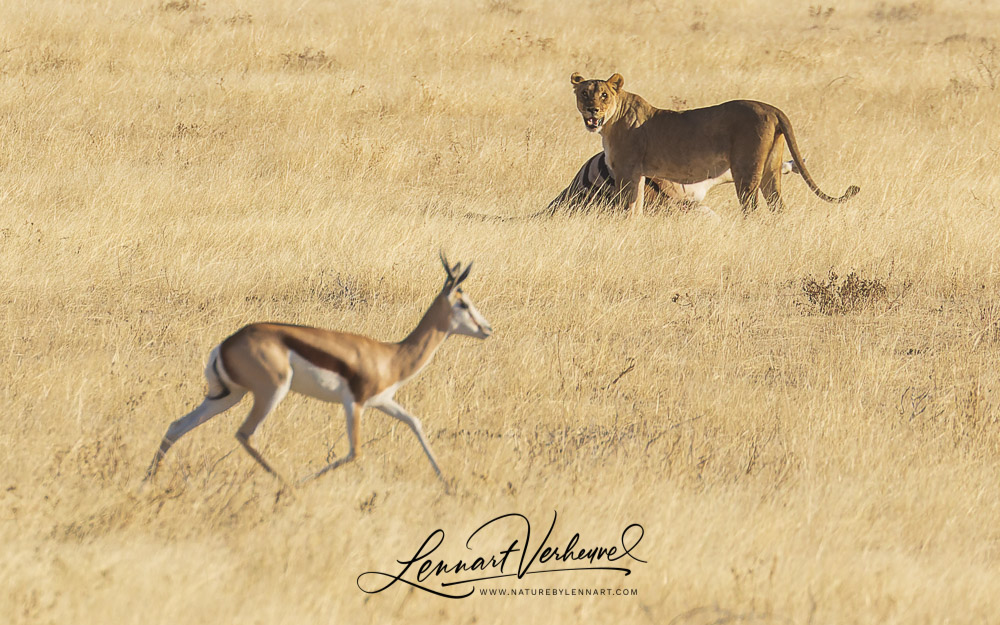
We’ve been traveling for about half a week now with a group of seventeen. We’re traveling in three cars. Today is the day on which we will finally visit Etosha National Park. The day before we left Maun in Botswana and we’ve driven all the way to Etosha in Nambia. That was quite a distance! We left Maun 6 in the morning and about 2.30 in the night we arrived before the gates of Etosha. We quickly put up our tents and already at 5.30 we are waiting for the gates to open. But it would finally begin: a visit to the famous Etosha!
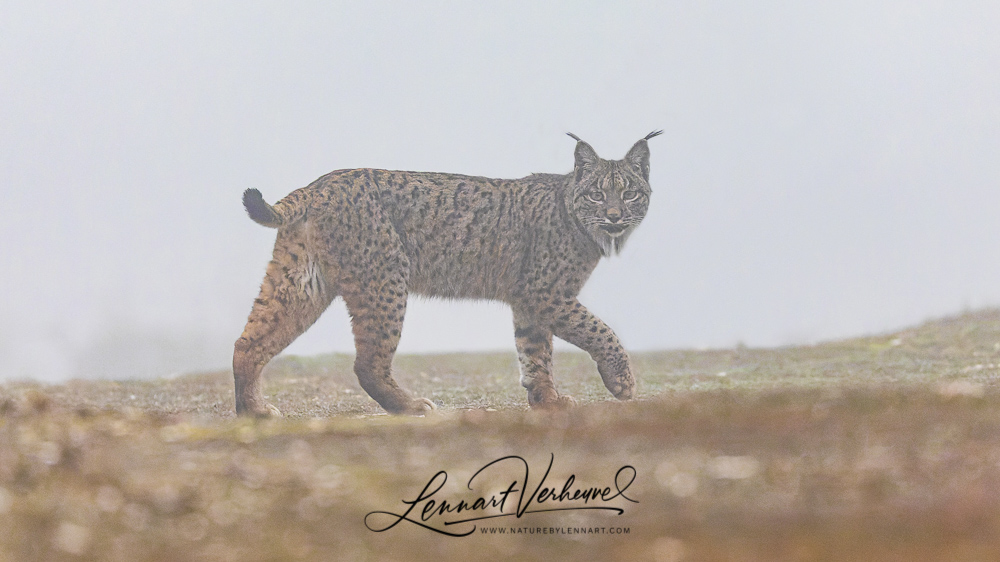
After I had decided for myself that I wanted to focus my trips on seeing all the wild cats of the world I had all kinds of big plans, but hadn’t actually seen any. It was time to change that! The Iberian lynx is the rarest cat species in the world and is threatened by extinction. Luckily things are looking better now for the species. Still the number of individuals is around 500, so they are not yet out of the danger zone. Despite the low numbers this cat is much more easy to see than the Eurasian lynx. Just go to the Sierrra de Andujar in Spain and with a bit of luck you will see it. So that’s also my plan, but instead of driving up and down the road over there and scanning the area in the hope of bumping into one, I want to have it really close. That’s why I’ve booked a photo hide for three days in the area, hoping for a close view. After my flight from Amsterdam to Malaga, I picked up my rental car and drove to Andujar. There I spent the night in my car. The next morning I’m taken with a 4×4 to one of the hides. Then the waiting starts…